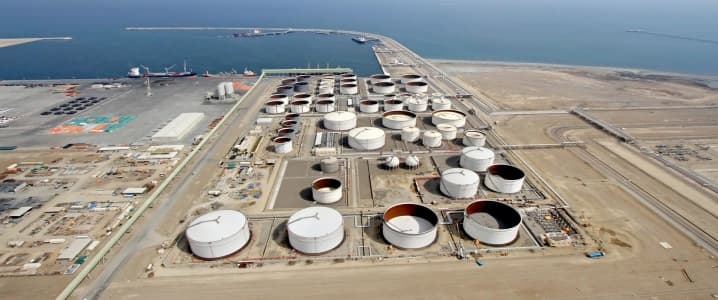Oil prices took a breather mid-week after the U.S. saw a larger than expected increase in crude inventories. The market is still heading in a bullish direction, but the path higher is not entirely free of obstacles.
The International Energy Agency also sought to calm the market this week, issuing a statement on Tuesday that the markets “are now adequately supplied, and that global spare production capacity remains at comfortable levels.”
While the expiration of Iran sanctions waivers will tighten the market significantly, OPEC has the ability to plug any supply gaps. “As a result of OPEC’s high compliance rate with the agreed supply cuts in the OPEC+ group, global spare production capacity has risen to 3.3 mb/d, with 2.2 mb/d held by Saudi Arabia and around 1 mb/d by the United Arab Emirates, Iraq and Kuwait,” the agency said.
That eased upward pressure on oil prices, which erased some gains on Tuesday. However, it is important to emphasize that OPEC+ will not automatically increase output on a barrel-for-barrel basis as the Trump administration seems to think. “There must be actual impact on the market and a real demand from customers,” an OPEC source told Reuters, adding that any supply increase probably won’t happen until June.
“We cannot expect production to be increased in the near future, in other words. It is not yet clear how pronounced the decline in Iranian oil exports will ultimately be,” Commerzbank wrote in a note. “Yesterday’s API inventory data also indicate no immediate need for OPEC to act. They show that US crude oil stocks climbed by an unexpectedly marked 6.9 million barrels last week.” The apparent inventory increase lends support to OPEC’s strategy of waiting until the market shows signs of over-tightening before brining production back online. Related: Iraqi Oil Industry Takes A Critical Turn
With all of that said, the likely outages in Iran push the oil market undoubtedly in a bullish direction. The market was already flirting with a deficit; significant declines in Iranian exports will magnify that trend. The U.S. government said that, unlike six months ago, there is plenty of supply today that makes a tougher line on Iran possible.
Others disagree. “Our analysis shows a global surplus of 2.3 million barrels per day (mb/d) in Q4-2018, but a deficit of 0.2mb/d in the current quarter,” Standard Chartered said in a report on Tuesday. “The market is 2.5mb/d tighter than it was six months ago.” The bank argued that OPEC+ will not act hastily over fears of a repeated of the price crash late last year. As a result of U.S. sanctions, the market could continue to move deeper into deficit territory.
Still, while everything is tightening up now, the situation could clear up later this year, especially if OPEC+ does decide to add barrels back onto the market. Goldman Sachs has repeatedly laid out a case for a bullish near-term, combined with a slide in prices in late 2019 and into 2020. It stuck to that forecast even after the Trump administration announced that it was stepping up the “maximum pressure” campaign. “[W]hile we acknowledge the near-term upside price risks, we reiterate our fundamentally derived Brent price trading range of $70-75/bbl for 2Q19,” Goldman Sachs said in a note. Related: Chevron And Occidental Start Bidding War For Anadarko
There is a chance that the price decline could happen a bit later than previously thought, the bank said, but that does not change the overarching thesis. “Given our confidence in better supplied markets next year and the still high uncertainties around the aggregate OPEC+ production path in coming months, we are, however, not changing this forecast for now.”
Echoing the IEA, the investment bank argues that high levels of spare capacity likely muted the price impact of the U.S. announcement. After all, American sanctions could, in theory, knock off over 1 million barrels per day of Iranian oil, a massive sum. But oil prices only jumped by $2 per barrel on the news, a modest increase, Goldman argues.
“We believe this muted reaction reflects a drastically different fundamental set-up than last year, given the visibility on available spare capacity,” Goldman analysts concluded. Ultimately, the bank sees oil prices declining later this year and into 2020.
ADVERTISEMENT
By Nick Cunningham of Oilprice.com
More Top Reads from Oilprice.com:
- Saudi Oil Minister: We Won’t Ramp Up Oil Production Soon
- The Firm Floor Under Oil Prices
- Saudi Arabia, Iraq Prepared To Reverse Oil Production Cuts


















